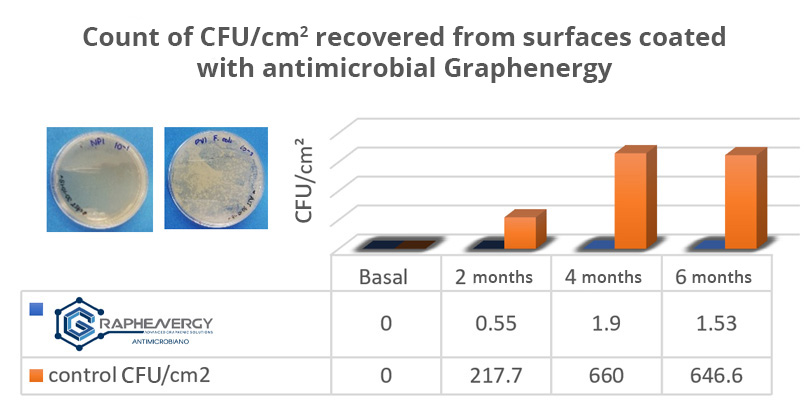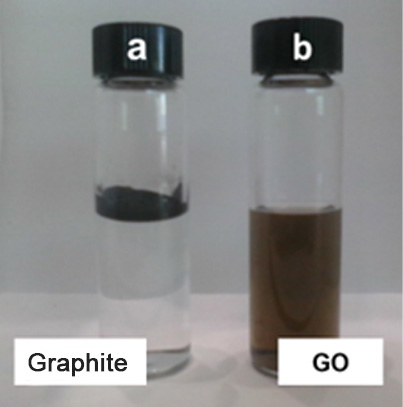Defying the flames:
The triumph of graphene oxide in the creation of fire-fighting coatings
The inclusion of Graphene Oxide (GO) in coatings demonstrates effectiveness in inhibiting flammability, providing a fire-resistant barrier. Benefits include anti-corrosion protection, antimicrobial properties and increased adhesion to substrates. This advance highlights Energeia-Graphenemex’s innovation in the production of fireproof coatings, positioning itself as a leader in the research and application of high-quality graphene materials.
Coatings are used in various sectors, at an industrial level the use of coatings are focused on protection against corrosion, while at a commercial level they are used for infrastructure maintenance and for decorative purposes. Today, the coatings industry continues to constantly research the development of improved coatings, with antimicrobial, non-stick properties, and greater resistance to chemical attack and weathering. However, at a commercial level there are few developments focused on fireproof coatings (flame retardant) for fire protection in infrastructure.
Traditional fireproof coatings are cementitious coatings, based on Portland cement, magnesium oxychloride cement, vermiculite, gypsum and other minerals. In addition, they contain fibrous fillers, binders, supplements and additives that control density and rheology, these materials are generally mixed with water on site and applied by spraying some construction or can be applied to a flammable substrate by using a roller, in thicknesses of half an inch or more. However, due to their weight, thickness and poor aesthetics, they limit architectural design.
In coatings and paint industry, there is a wide variety of coatings based on different types of resins (polymers) and additives. Due to their nature, most of these coatings are flammable and combustible materials. That is, they are materials that can catch fire when exposed to fire, suffering degradation and the release of heat to subsequently initiate the spread of the flame, releasing smoke and toxic gases, being a danger to the safety of human life and property. On the other hand, polymer-based fireproof coatings use conventional additives based on halogens (bromine and chlorine), as well as phosphorus, melamine and inorganic compounds, to improve the fire resistance of the coatings, however, these materials are toxic to humans and the environment.

In recent years, Energeia-Graphenemex has focused on the production of graphene materials. Graphene is the most revolutionary nanotechnological additive for the coatings and paints industry, as it allows the development of coatings with extraordinary anti-corrosion protection, coatings with antimicrobial properties, coatings with better adhesion to substrates and greater resistance to UV radiation. In this sense, graphene oxide (GO) has been shown to be a new additive that helps inhibit or reduce the flammability of coatings, to produce effective fireproof coatings.
Its efficiency is associated with the fact that GO has a strong barrier effect, high thermal stability and great surface absorption capacity that are favorable for effectively reducing heat and mass transfer.
The incorporation of GO in coatings can improve flame resistance, by inhibiting the two key terms: heat and fuel. That is, it can function as a flame retardant in the following ways:
• GO possesses a unique two-dimensional layer structure and can promote the formation of a dense continuous layer of carbon during the combustion process (see Fig. 1). Carbon can act as a physical barrier to prevent heat transfer from the heat source and delay the escape of products (pyrolysis) from the coating.
• Because GO has a large surface area, it can effectively adsorb flammable volatile organic compounds or hinder their release and diffusion during combustion.
• The presence of oxygenated groups in the GO structure means that, during the combustion of the coating, the oxygen-containing groups in GO can undergo decomposition and dehydration at low temperature, thus absorbing heat and cooling the polymeric substrate during combustion. Meanwhile, gases generated by dehydration can dilute the oxygen concentration around the ignition periphery, decreasing the risk of fire spread.
In summary, the incorporation of GO in coatings can provide fire protection, because they can release water and provide thermal insulation effects.
Graphene-based flame-retardant coatings are designed to retard ignition and burn rate, and must provide a fire-resistant barrier.
Energeia – Graphenemex®, Mexican company, leader in Latin America in research and production of graphene materials for the development of industrial applications. It has extensive experience in the large-scale production of graphene oxide (GO) and has high-quality graphene materials for sale for use in different industries.

a) coating without GO and b) Coating with GO.
References
- Sachin Sharma Ashok Kumar, Shahid Bashir, K. Ramesh, S. Ramesh, Progress in Organic Coatings, 154, (2021)
- Weil, Edward. D. Fire-Protective and Flame-Retardant Coatings – A State-of-the-Art Review. Journal of Fire Sciences, 29(3), 259–296.
- Lipiäinen, H., Chen, Q., Larismaa, J., & Hannula, S. P. (2016). The Effect of Fire Retardants on the Fire Resistance of Unsaturated Polyester Resin Coating. Key Engineering Materials, 674, 277–282.
- Md Julker Nine, Dusan Losic. Mahmood Aliofkhazraei, Nasar Ali, Mircea Chipara, Nadhira Bensaada Laidani, Jeff Th.M. De Hosson, Handbook of Modern Coating Technologies, Elsevier, 2021, Pages 453-492.

























